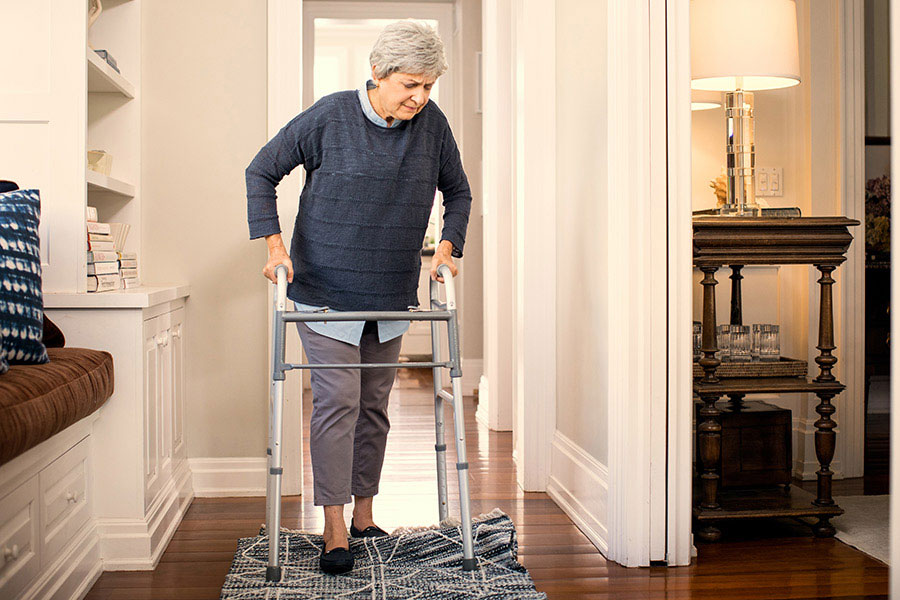Falls are a significant concern for the elderly, with far-reaching consequences that extend beyond physical injuries. Understanding the health risks of falls in elderly is crucial for preventing these incidents and ensuring the well-being of our aging population. In this article, we’ll explore the various aspects of falls among seniors and offer insights into mitigating these risks effectively.

Introduction to Falls in the Elderly
Falls among the elderly are not uncommon. Statistics suggest that more than one in four older adults experience falls each year, leading to severe injuries in many cases. The health risks of falls in elderly encompass a wide range of physical, emotional, and financial challenges.
Common Causes of Falls
The reasons behind falls are multifaceted. They can result from a combination of age-related physical changes, health conditions, and environmental hazards. Understanding these causes can help in formulating effective prevention strategies.
Physical Health Factors
As people age, they experience changes in vision, balance, and muscle strength. These factors can significantly contribute to the likelihood of falls.
Medical Conditions and Medications
Chronic conditions such as arthritis, diabetes, or heart disease, along with medications that affect balance, can increase fall risks.
Environmental Hazards
Tripping hazards like loose rugs, poor lighting, and cluttered pathways within the home are common contributors to falls. Assessing and modifying the living environment can reduce these risks.
The Impact of Falls on Health
The aftermath of a fall can be devastating. Physical injuries, such as fractures or head injuries, can lead to long-term health issues.
Physical Injuries
Fractures, particularly hip fractures, are among the most serious consequences of falls. They often require prolonged hospital stays and rehabilitation.
Emotional and Psychological Effects
Falls can also result in a loss of confidence, leading to decreased mobility and social isolation. This can exacerbate mental health issues such as depression and anxiety.
Preventing Falls in the Elderly
While falls are common, they are not an inevitable part of aging. Implementing preventive measures can significantly reduce the risk.
Exercise and Physical Activity
Regular exercise is one of the most effective ways to improve balance and strength. Programs like Tai Chi have been shown to be particularly beneficial in reducing fall risks.
Home Modifications
Simple changes in the home environment, such as removing tripping hazards and installing grab bars, can drastically reduce the likelihood of falls.
Use of Technology
Technology, such as fall detection devices, plays a crucial role in ensuring quick assistance in the event of a fall. These devices can alert emergency services and family members, providing peace of mind for seniors living alone.
Professional Help and Resources
Consulting healthcare professionals can provide personalized strategies to mitigate fall risks. Physical therapists and occupational therapists can offer tailored exercises and home safety assessments.
For further guidance, the National Institute on Aging provides valuable resources on fall prevention.
Understanding the Role of Family and Caregivers
Family members and caregivers play an essential role in preventing falls. By staying informed and involved, they can help create a safer environment for their loved ones.
Education and Communication
Educating family members on the risks and preventive measures is crucial. Open communication about fears and challenges can lead to better support systems.
Conclusion
Falls among the elderly pose significant health risks, but with the right strategies and support, they can be prevented. By understanding the causes and impacts, and by utilizing available resources and technologies, we can create safer environments for our seniors.

FAQ
What are the most common injuries from falls?
The most common injuries include fractures, particularly hip fractures, and head injuries.
How can technology help prevent falls?
Technology such as fall detection devices can alert emergency contacts and provide quick assistance.
What role do caregivers play in fall prevention?
Caregivers can help by making the home safer, encouraging physical activity, and staying informed about fall prevention strategies.
This article contains affiliate links. We may earn a commission at no extra cost to you.

